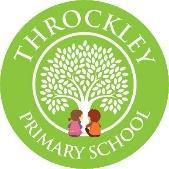Throckley Primary School Science Overview


Early Years Year 1 Year 2 Year 3
Children experience science through EY Curriculum ‘World’ strand: ‘Understanding the World
Use all their senses in hands-on exploration of natural materials.
Explore collections of natural & human-made materials with similar and/or different properties.
Talk about the differences between materials, and changes they notice: cooking & melting, changing state, sinking or floating, letting or preventing light passing.
Explore how things work via cogs, pulleys & toys.

Explore and talk about different forces they can feel (water pushing up on a boat, elastic, magnets).
Plant seeds and care for growing bulbs to observe growth and decay.
Understand the key features of the life cycle of an animal, nurturing caterpillars while they metamorphosise.
Recognise some environments that are different from the one in which they live (both natural & human made, local & national).
Understand the effect of changing seasons on the natural world (noting & recording the weather over the seasons, witnessing the effect on animals and plants).
Seasonal changes
Observe the seasons change; associated weather; day length
Wearing coats or sun cream based on weather (EYFS) Daily weather chart
(Reception)


























Weather (Geography Y1)
Explorers (History Y1) Mark making (Art Y1)
Everyday materials
Materials/ objects; name everyday materials; group by property
Different textures of materials; features of classroom environment (EYFS)
Toppling tower (DT Y1)
Animals, including humans
Identify common vertebrates; carnivores, herbivores and omnivores; structure of animals; link human body parts to senses




Names of common animals (EYFS) life cycle of a butterfly (Reception)
Weather and seasons (Y1)
Where do different animals live?
(Geography Y1)
Modify food to taste (DT Y1)
Plants
Identify & name wild & garden flowers; identify evergreen and deciduous trees; basic structure of plants
Names of common plants; planting a seed (EYFS)
Weather and seasons (Y1)
Local forest habitat (Geography Y2)
Uses of everyday materials
Properties of materials; physical properties; suitability for purpose
Objects, materials & properties (Y1)
Everyday materials (Y1)
Waterproof hat (DT Y2)
Living things & their habitats
Living, once living & never alive; habitats provide for needs; simple food chains
Identify animals and plants (Y1)
Seasonal Change (Y1)
Where do different animals live?
(Geography Y1)
Animals, including humans
Offspring grow into adults; basic needs of animals; humans need a healthy diet hygiene & exercise
Describe animals (Y1) herbivores, carnivores, omnivores (Y1)
Animals, including humans (Y1)
Healthy food (DT Y2)
Year 4 Year 5 Year 6
Light
Light & dark; light sources; sun safety; reflections; shadows
Seasonal change (Y1)
Seasonal changes (Y1)
Rocks
Group & compare rocks rock cycle; fossil formation; soil composition
Uses of everyday materials (Y2)
Mountains (Geography Y3) Natural disasters (Geography Y4)
Forces & magnets
Objects & surfaces; friction & forces; magnetic poles & attraction
Materials (KS1)
Living things & their habitats (Y2)
Animals, including humans
Human nutrition; seven nutrition types; skeleton & muscles
Parts of the body (Y1) Human nutrition (Y2)
Animals, including humans (Y2)
Balanced diet (DT Y3)
Plants
Seeds & bulbs; germination and survival needs (water, light, heat)
Plants, including trees and basic structure (Y1)
Plants (Y1)
Local forest habitat (Geography Y2)
Attenborough/ Goodall (History Y2)
Living things & their habitats
Characteristics; basic classification keys; suited to an environment; human impact on the environment

Habitats (Y2) plant life cycle (Y3)
Plants (Y3)
Where do different animals live?
(Geography Y1) Amazon rainforest (Geography Y3)
Animals, including humans
Four teeth types; organs of the digestive system; food chains (predators, producers, prey)
Parts of the body (Y1) human nutrition (Y3)
Animals, including humans (Y3)
Making bread (DT Y4)
States of matter
Classify solids, liquids & gases. Ordering change. Water cycle.
Everyday materials (Y1) uses of everyday materials (Y2)
Rocks (Y3)
Journey of a river (Geography Y5)
Electricity
Renewable energy; appliances; series circuits components; conductors & insulators




Uses of materials (Y2)
Forces & Magnets (Y3)
Victorians (History Y4)
Plants
Function of the parts of plants; water transportation; basic needs of plants (nutrients, light, space); pollination
Plant structure (Y1) Bulbs and germination (Y2)
Plants (Y2)
Sound
Vibrations; sound travelling; pitch & amplitude; soundproofing
Linking parts of the body to senses (Y1)
Light (Y3)
Tuned percussion (Music Y3)
Working scientifically investigations
Assessment & consolidation of prior knowledge.
Living things & their habitats
Life cycles of animals; metamorphosis; detailed structure of flower; sexual & asexual reproduction
Plant life cycle & structure (Y3) classification (Y4)
Living things & their habitats (Y4)
Attenborough & Goodall (History Y2)
Animals, including humans
Human life cycle; gestation periods; puberty & menstruation; old age
Human body (Y1) human offspring resemble the parent (Y2)
Animals, including humans (Y4)
Puberty (PSHE Y5)
Forces
Balanced forces; gravity; friction; air & water resistance; mechanisms
Forces act between objects & surfaces (Y3)
Electricity (Y4)
Pulleys & Gears (DT Y5)














Earth & space
Movement of the Earth, Sun & Moon; oblate spheroids; the planets; night & day; phases of the Moon
Seasonal change (Y1) ight (Y3)
Sound (Y4)
Properties & changes of materials
Properties of materials; solutions; extracting solids, liquids & gases; reversible and irreversible change
Materials (KS1) magnets (Y3) electrical conductivity (Y4)
States of matter (Y4)
Living things & their habitats
Binomial classification; complex classification keys microorganisms
Food chains habitats & the wider environment (Y4)
Living things & their habitats (Y5)
Environmental damage (Geography Y6) Diet affecting mood (DT Y6)
Animals, including humans
Cardiovascular system organs; composition of blood; transport of nutrients & water; effect of drugs; impact of exercise on heart rate
Need for exercise (Y2) muscles (Y3) digestive system (Y4)
Animals, including humans (Y5)
Light
Properties of light; refraction; forming shadows; colour spectrum
Light & shadow (Y4)
Earth & Space (Y5)
Working scientifically investigations
Assessment & consolidation of prior knowledge.
Evolution & nheritance
Inheritance; variation; adaptation; natural selection; fossil record Fossils formation (Y3) living things are suited to their environment (Y4)
Forces (Y5)
Electricity
Electrical current; voltage; output of components; circuit symbols; Electricity (Y4)



Properties & changes of materials (Y5)
Industrial revolution (History Y6)
Use switches (DT Y6)
